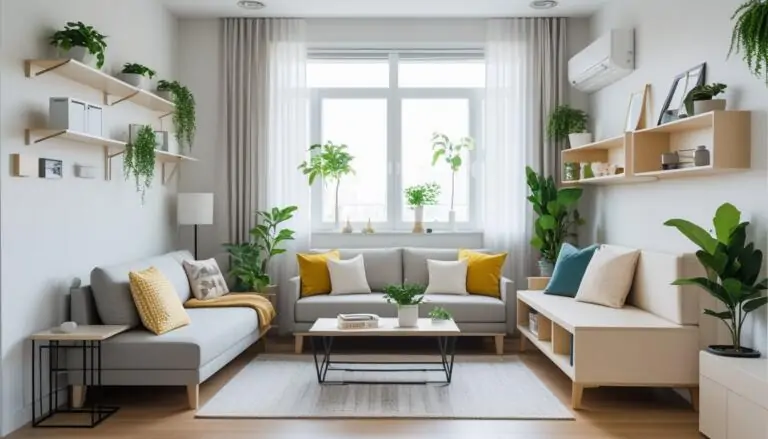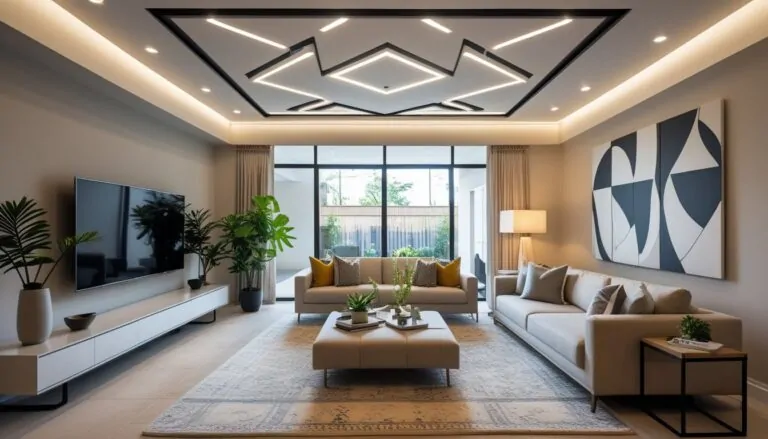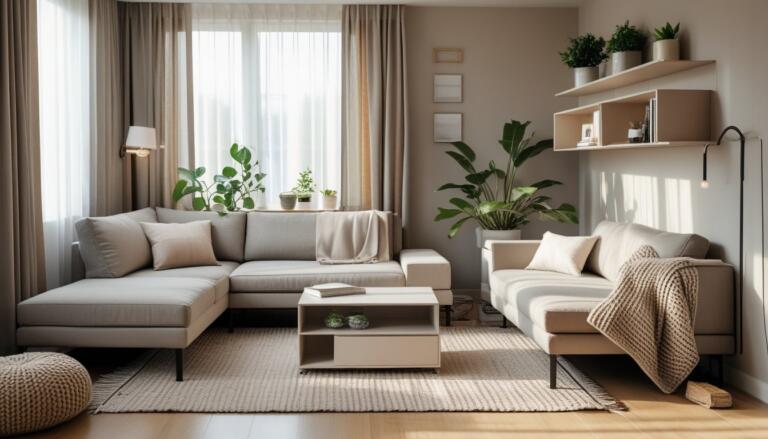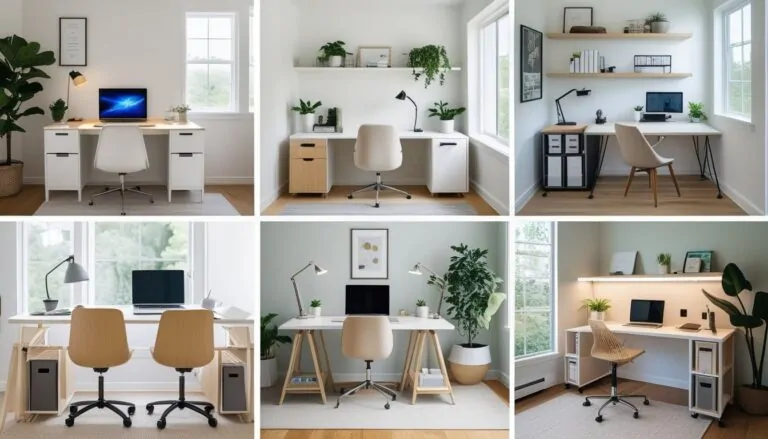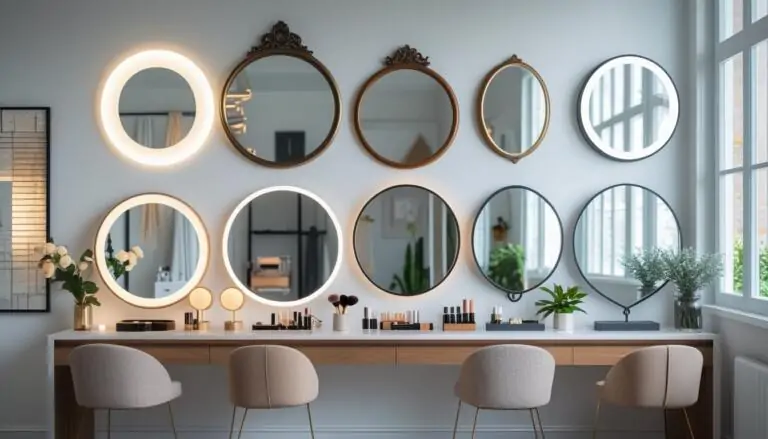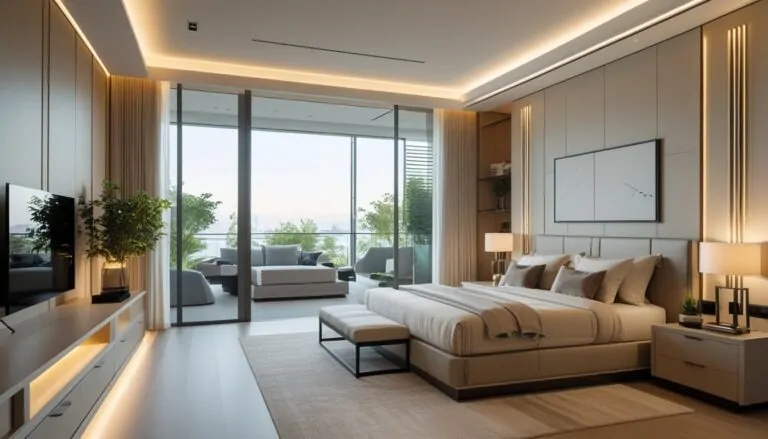6 Living Room TV Wall Ideas to Elevate Your Space with Style and Functionality
A living room TV wall can be both functional and stylish, serving as a central point in the home. Designing this space thoughtfully helps create a comfortable and appealing environment without making the TV feel out of place.
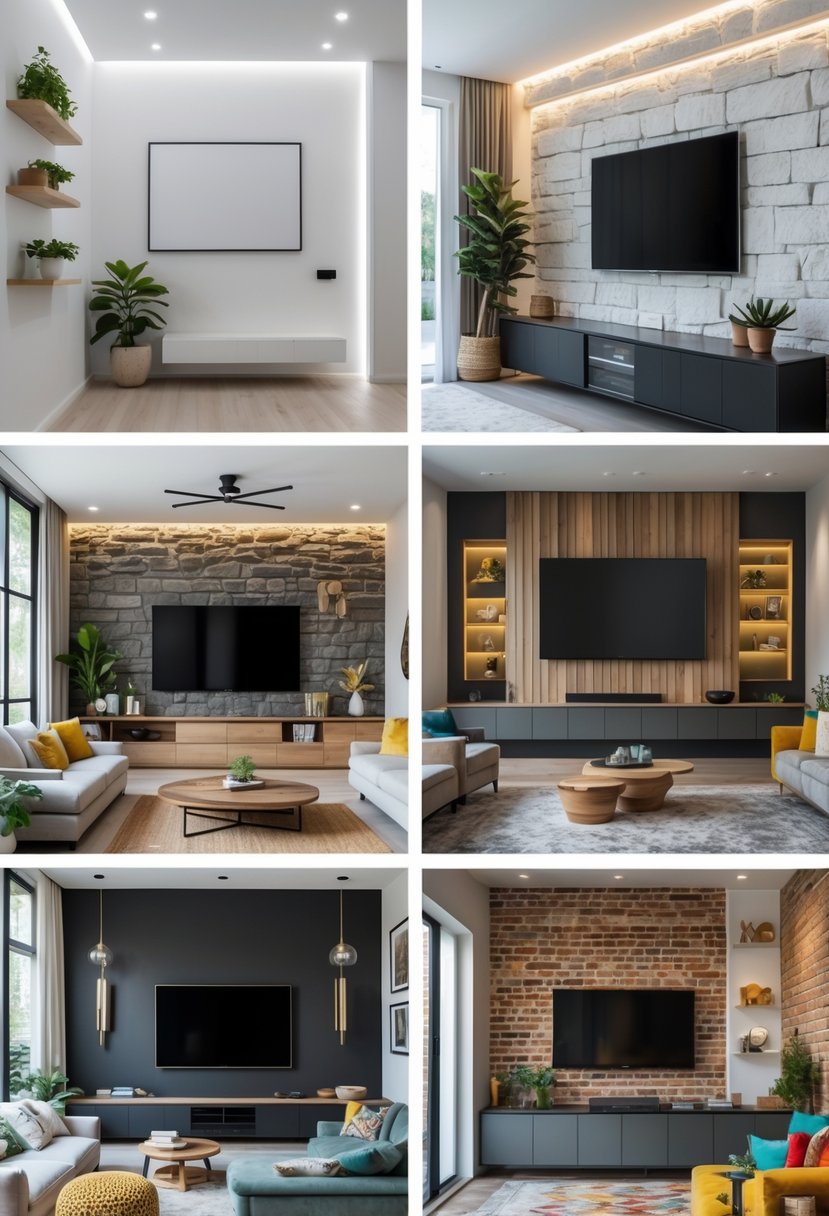
Choosing the right TV wall ideas can help balance style, storage, and viewing experience. This article explores six practical ways to enhance the TV wall, making it fit well with different living room styles.
1) Create an accent wall using bold paint or textured wallpaper behind the TV
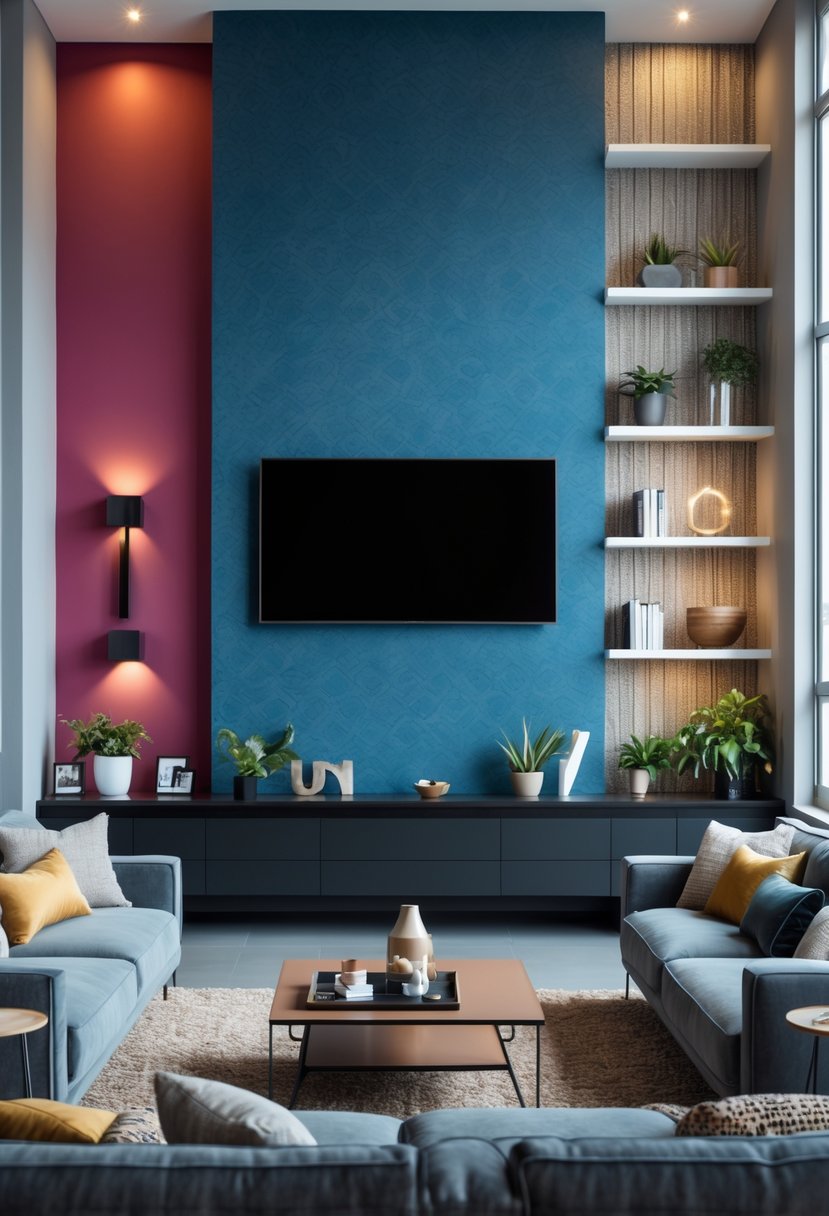
Using bold paint behind the TV creates a clear focal point in the room. Dark or rich colors help the TV blend in when it is off.
Textured wallpaper adds depth and interest without overwhelming the space. Patterns like grasscloth or embossed designs bring subtle style and a tactile feel.
Both options transform the wall easily and give the living room a fresh, modern look.
2) Install built-in cabinets or shelves around the TV to hide cables and display decor.
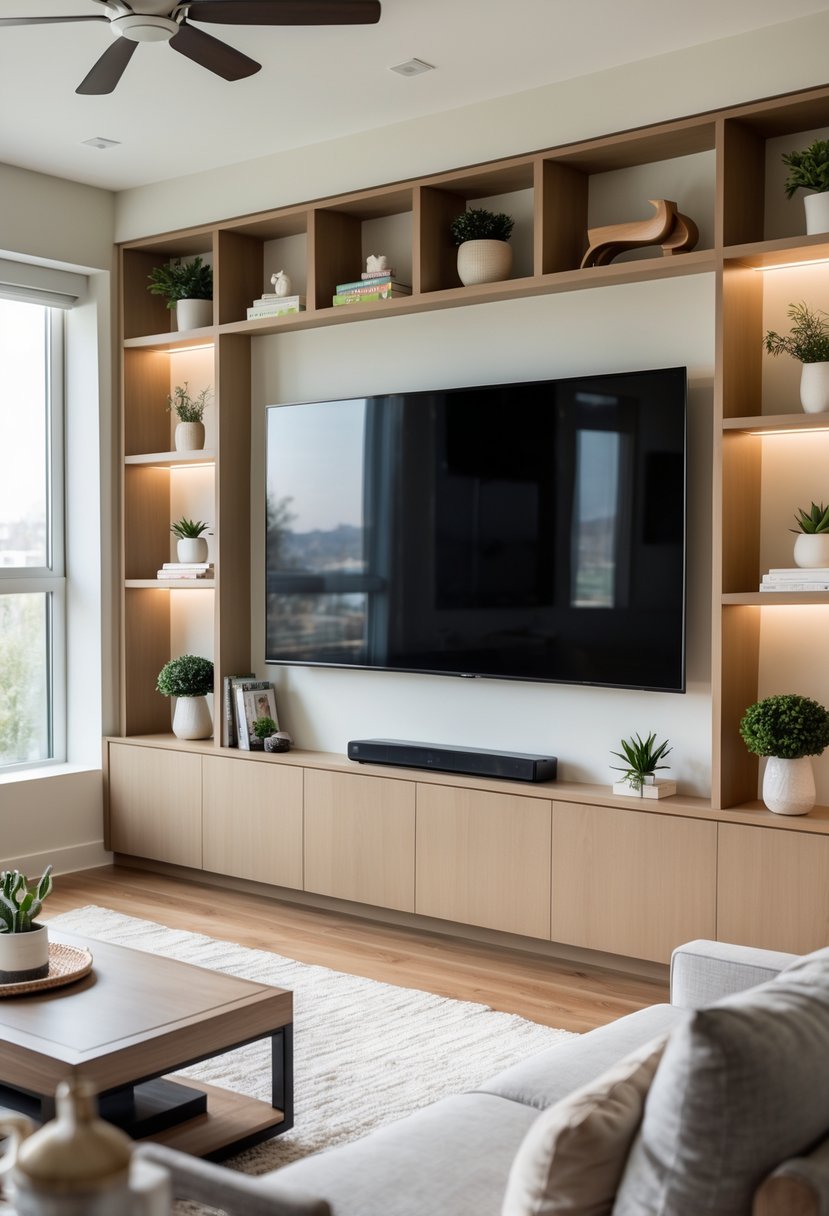
Built-in cabinets or shelves provide a neat way to keep TV cables out of sight. They allow wires to be tucked away behind closed doors or inside walls.
These units also offer space to display books, photos, and other decor items. This helps the TV blend in with the room and adds a personal touch.
Using built-ins helps keep the living room organized while enhancing the overall look. They combine function and style in one design.
3) Use a minimalist floating TV mount to save floor space and maintain clean lines.
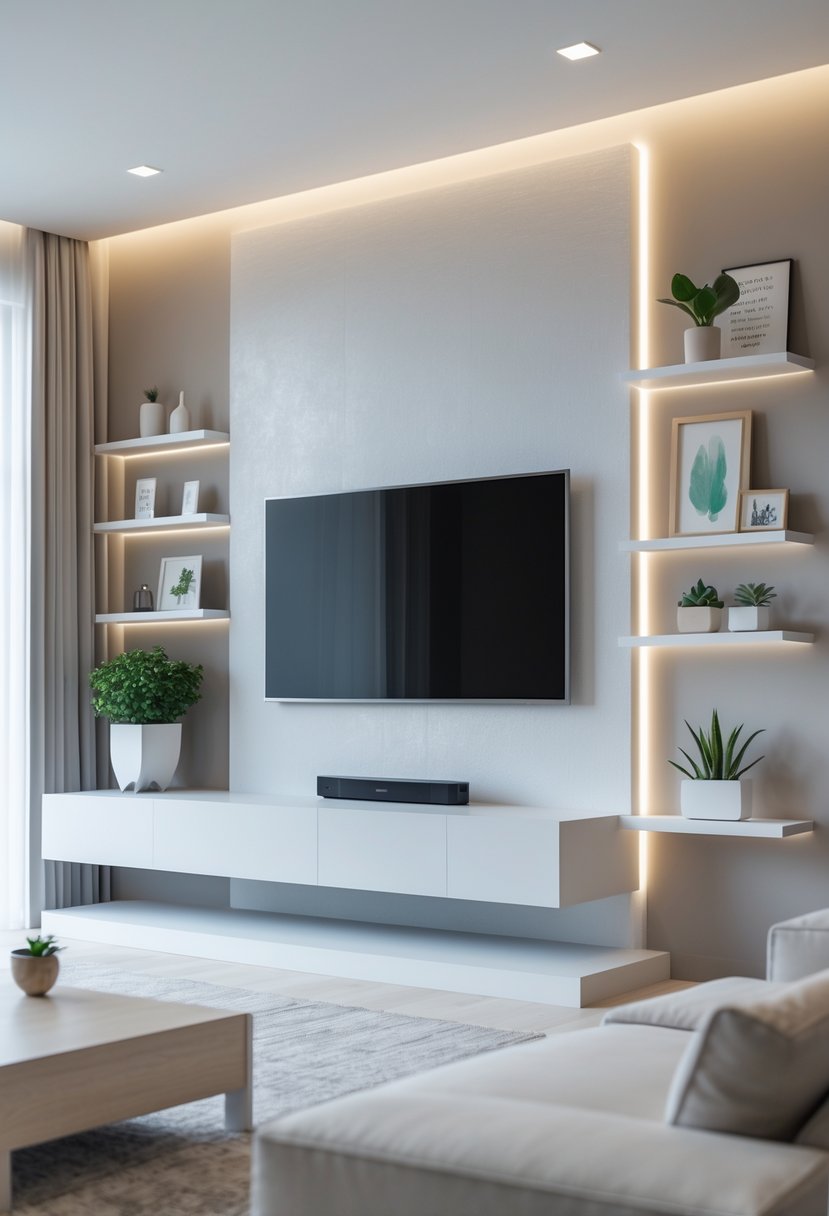
A minimalist floating TV mount lifts the TV off the floor, creating more open space. This design keeps the room looking tidy and uncluttered.
It often includes hidden cable management to keep wires out of sight. The mount’s slim profile adds a modern touch without taking up extra room. This solution works well in small or simple living rooms.
4) Incorporate wood paneling or slats for a warm, modern media wall effect.
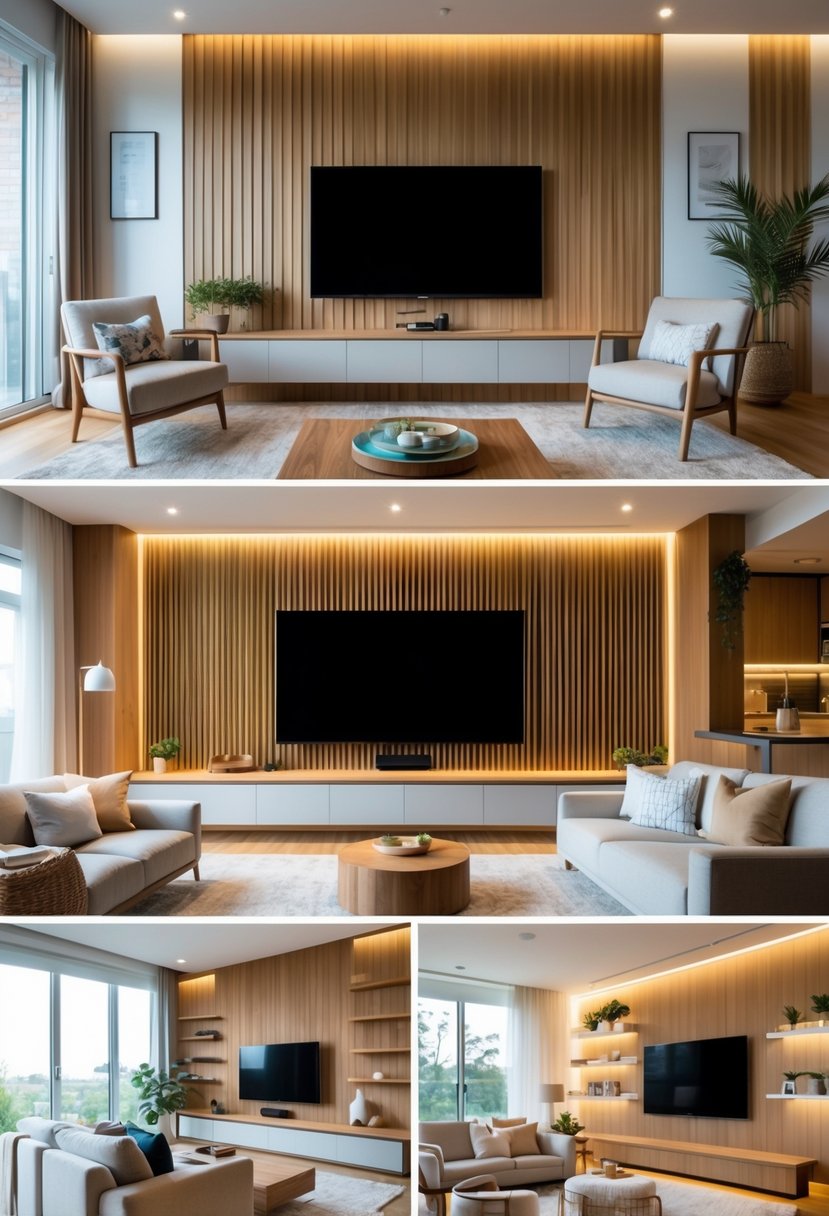
Wood paneling or slats add warmth and texture to a living room. They create a cozy but modern backdrop for the TV.
Choosing light wood tones like oak keeps the look fresh and bright. Vertical or horizontal slats can add height or width to the space.
Adding integrated lighting can enhance the wood’s natural color and create a stylish atmosphere. This approach blends functionality with visual appeal.
Design Considerations for Living Room TV Walls
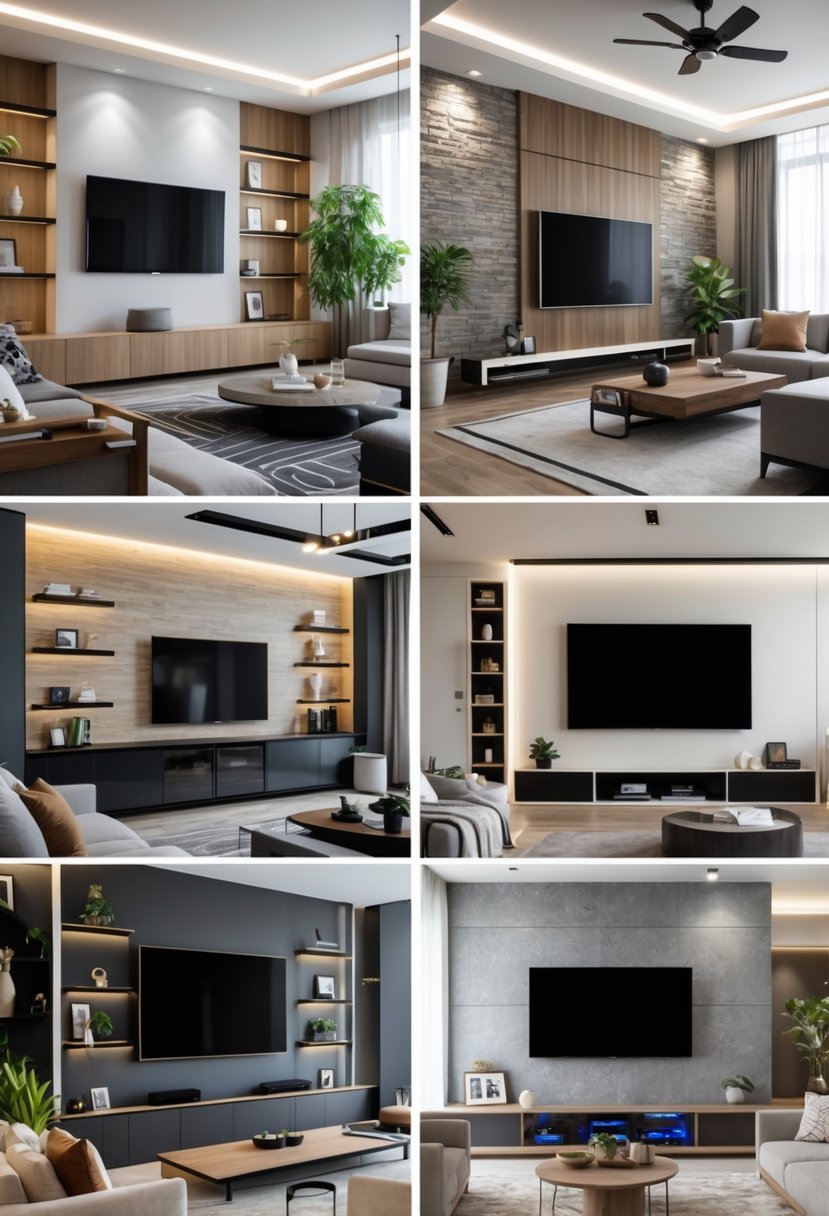
Effective TV wall design depends on how the room is arranged and the best ways to view the screen. These details shape both comfort and style.
Impact of Room Layout
The layout of the living room affects where the TV wall should go. Placing the TV opposite the main seating area is common to create a natural focal point.
It’s important to avoid blocking walkways or windows. The TV wall should fit with other furniture without crowding the space. Built-in cabinets or shelves can keep wires and devices organized.
Lighting also matters. The TV wall should avoid glare from windows or bright lamps, or use curtains and lampshades to control reflections. The surrounding decor can be simple or detailed, depending on room size and style.
Optimizing Viewing Angles
Viewing angles influence comfort and picture quality. The TV should be mounted or placed at eye level when seated. Too high or low can cause neck strain.
Distance matters, too. The ideal gap between the TV and seating depends on screen size. For example, a 55-inch TV works best about 7 to 11 feet away.
The seating should face the TV directly if possible. If the room layout is fixed, swivel mounts or flexible stands can adjust the angle. This helps everyone get a clear view without turning or leaning.
Integrating Technology and Decor
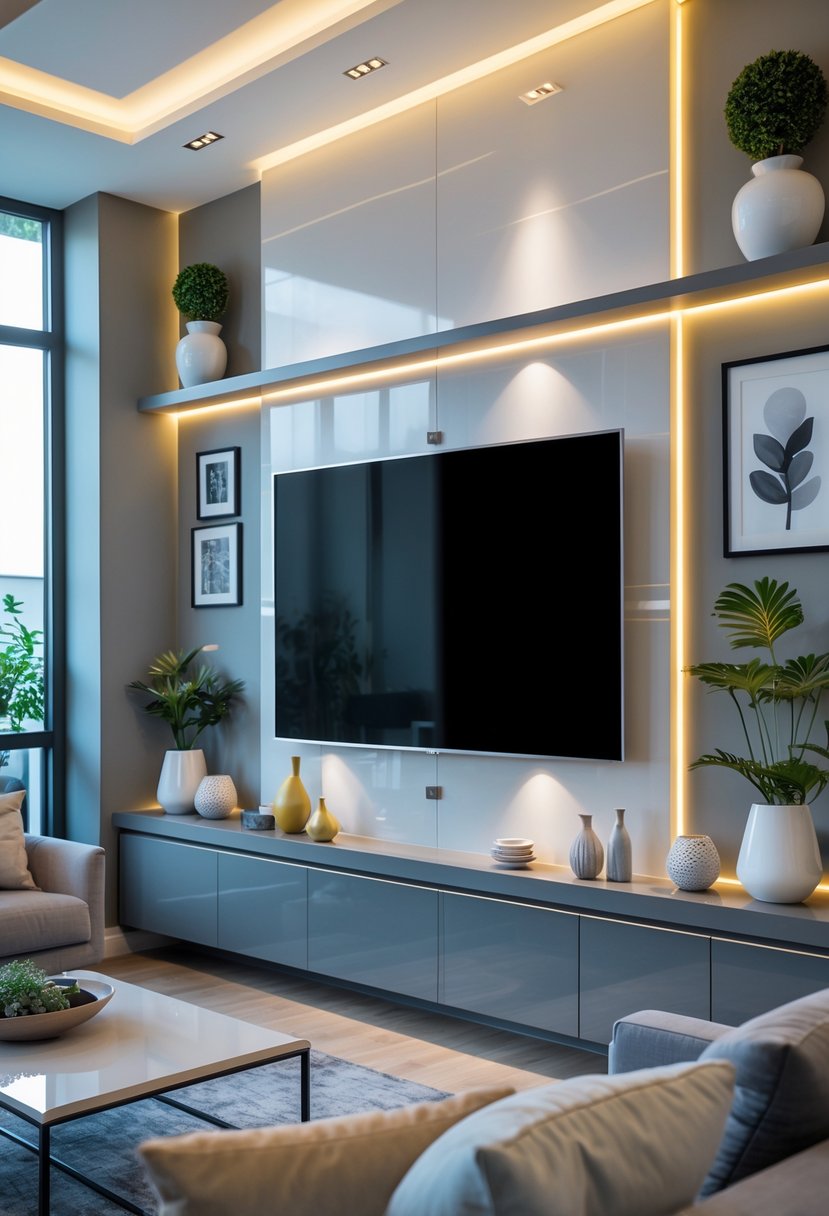
Connecting technology with home decor requires smart planning. It means hiding cables, organizing devices, and choosing designs that fit the room’s style.
Concealing Cables and Equipment
Messy cables can damage the sleek look of a TV wall. Using cable covers or in-wall wiring helps keep wires out of sight. Some opt for furniture with built-in storage to hide consoles, routers, and game systems.
Motorized lifts or hidden cabinets can store equipment when not in use. This setup reduces clutter and protects devices from dust. Labeling cables and using cable clips simplifies maintenance.
Good cable management not only looks better but also prevents accidents, making the space safer.
Blending Entertainment with Interior Themes
The TV wall should match the room’s colors and textures. Neutral palettes with mixed materials offer balance without overpowering the space.
Floating shelves around the TV can hold decor while keeping the focus on the screen. Wall-to-wall shelving adds storage and displays artwork or books next to the TV for a cozy look.
Custom frames or panels can turn the TV into a piece of art when it’s off. These features help merge entertainment with personal style.
Frequently Asked Questions
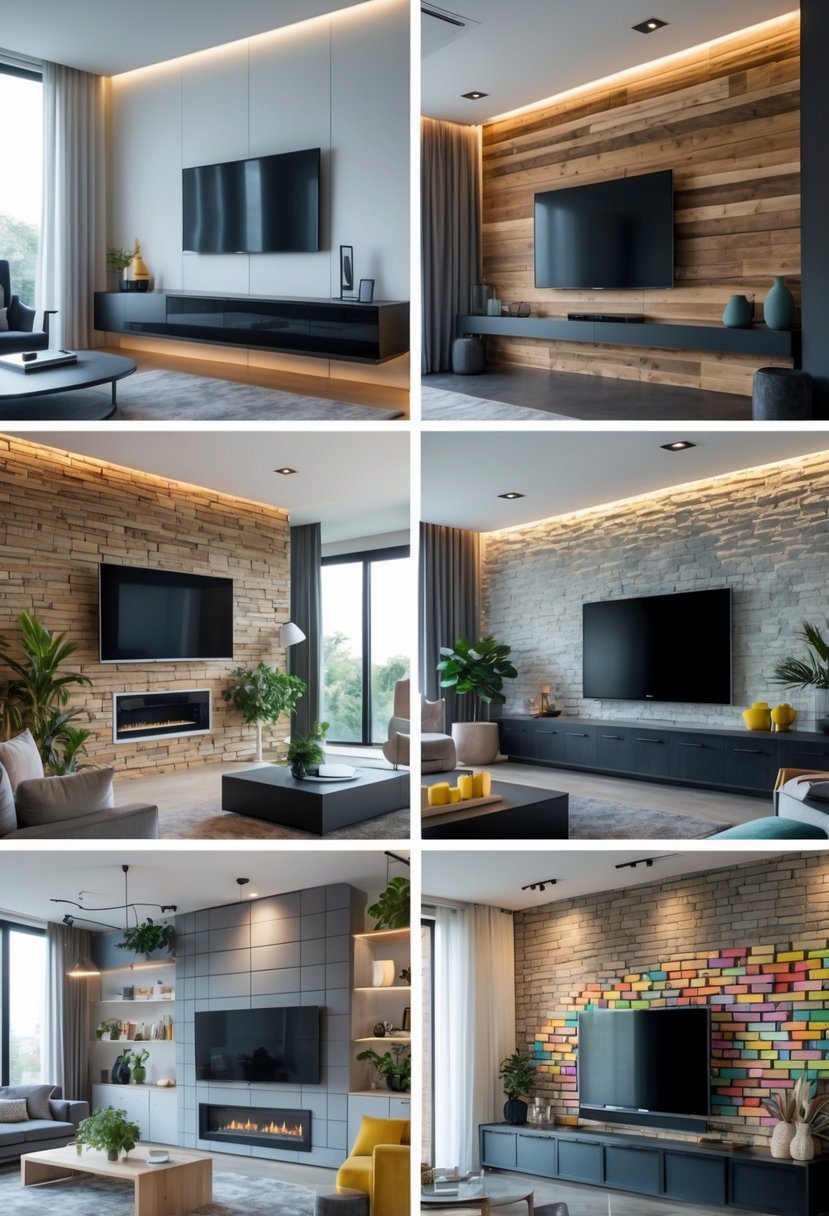
Bold paint or textured wallpaper can make a TV wall stand out. Built-in shelves and cabinets help organize cables and show off decor. Wood paneling adds warmth, while floating mounts keep the look simple and modern.
What are the trending modern TV wall design ideas for 2021?
In 2021, accent walls with bold colors or textured wallpaper became very popular. Floating TV mounts that save space and create clean lines are also common. Wood paneling or slats add a warm, natural feel to the design.
How can I decorate my living room TV wall in a contemporary style?
Contemporary styles use built-in shelves and cabinets around the TV to hide cables and provide storage. Minimalist floating mounts create a neat look. Adding a mix of textures, such as smooth wood and matte paint, gives the wall visual interest without clutter.
What are some innovative media wall ideas suitable for small rooms?
For small rooms, floating TV mounts free up floor space and keep the area open. Built-in storage around the TV helps reduce clutter by hiding cables and items. Using light-colored paint or wallpaper can make the space feel larger and brighter.

